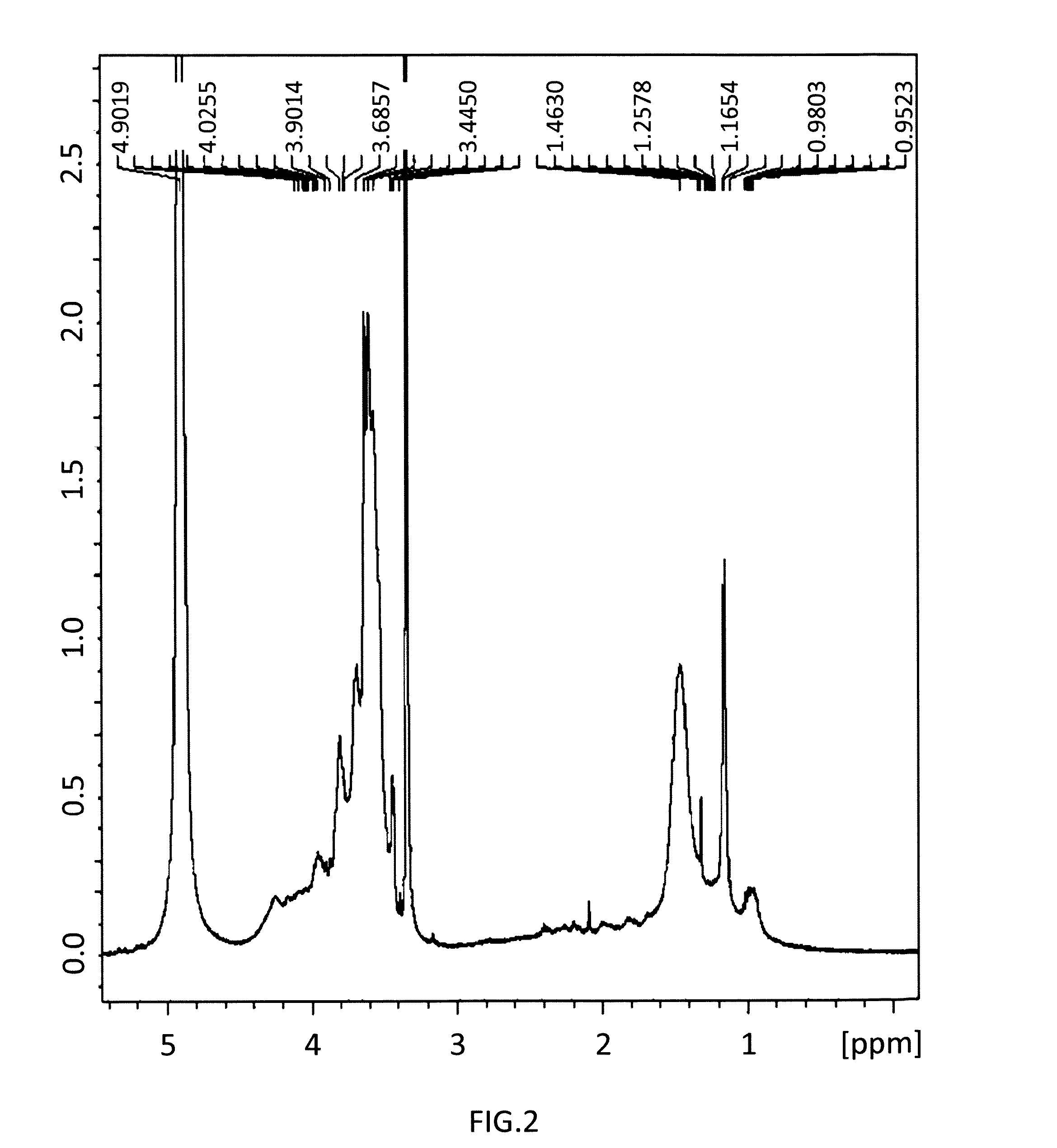Method for the Production of Hyperbranched Polyglycerol
a polyglycerol and hyperbranched technology, applied in the direction of ether preparation, ether preparation by compound dehydration, physical/chemical process catalysts, etc., can solve the problem of traditional synthetic techniques starting
- Summary
- Abstract
- Description
- Claims
- Application Information
AI Technical Summary
Benefits of technology
Problems solved by technology
Method used
Image
Examples
Embodiment Construction
[0029]As discussed in the BACKGROUND section, the glycerol polycondensation methods for the production of dendritic polyglycerol known to date generally have a rather low yield or have to be carried out in the vapour phase or dispersed in a solvent or aqueous medium. The present invention proposes a new process for producing hyperbranched polyglycerol from glycerol comprising the following steps:[0030](a) Adding in a vessel glycerol and a CaO-based catalyst,[0031](b) Flushing an inert gas, preferably carbon dioxide, to the resulting mixture and hermetically closing the reaction vessel, allowing pressure to build up from 1 to 10 bar above atmospheric, preferably from 2 to 6 bar;[0032](c) Heating the reaction mixture at a reaction temperature of at least 100° C. and below its boiling point;[0033](d) Maintaining the reaction conditions until at least 40 wt. % of glycerol is polycondensed and converted into hyperbranched polyglycerol, with concomitant water formation,[0034](e) Separatin...
PUM
| Property | Measurement | Unit |
|---|---|---|
| pressure | aaaaa | aaaaa |
| pressure | aaaaa | aaaaa |
| reaction temperature | aaaaa | aaaaa |
Abstract
Description
Claims
Application Information
 Login to View More
Login to View More - R&D
- Intellectual Property
- Life Sciences
- Materials
- Tech Scout
- Unparalleled Data Quality
- Higher Quality Content
- 60% Fewer Hallucinations
Browse by: Latest US Patents, China's latest patents, Technical Efficacy Thesaurus, Application Domain, Technology Topic, Popular Technical Reports.
© 2025 PatSnap. All rights reserved.Legal|Privacy policy|Modern Slavery Act Transparency Statement|Sitemap|About US| Contact US: help@patsnap.com


